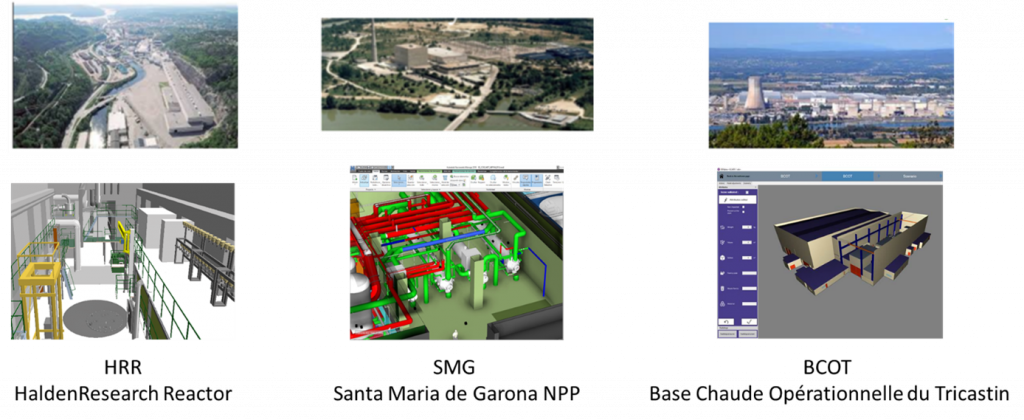
To test and validate the use of the PLEIADES platform, 3 use cases have been identified. Based on these use cases, 6 user stories have been defined to validate and improve the characterization of each type of information could be provided by the platform.
User stories #1 to #3 focus on comparison of alternative approaches to decommissioning activities such as radiological characterization, dismantling and decontamination of building surfaces. For each user stories, one use case is used with a dedicated list of decommissioning activities.
User stories #4 to #6 depend on 3D models developed for the previous user stories and focus on management of risks, uncertainties, regulatory aspects, and waste management strategies for the selected decommissioning scenarios.
Major steps have been identified to success in these tests:
- Firstly, the data integration; though the 3D models, and related information, uploading in the platform. Associating information to a 3D model could be a difficult part, due to sometimes missing links between data and model but it is a required step to go to a BIM model.
- Another important point concerns the data security. Nuclear facility information are sensitive and must be protected. Some work has been performed on the platform safety and information confidentiality as for example a tracking on who access to the data.
- Secondly, the checking of the data completeness. Regarding user story it is required to check that all the needed data are available. A list of minimal data required to perform the user stories has been established, to succeed on passing the user stories. However, in the case of some data will be missing on the list, a reflexion about why it is missing will be investigated.
In addition, to ensure the success in the platform use, some test and validation have been performed, especially on the database and its capacity to exchange information, leading on some evolution.
Data collection and preparation
During the task T3.1, data from 3 real use cases have been collected:
- Halden Research Reactor (HRR) in Norway
- Santa Maria de Garona NPP (SMG) in Spain
- Base Chaude Opérationnelle du Tricastin (BCOT) in France
The data has been collected over several campaigns and is still being analysed at the time this document is being produced. The type of information obtained is different in each of the use cases and must be checked to confirm that it can be adapted to each of the user stories.
Task T3.2 intends to study the completeness of the models -with especial focus on the 3D geometry- and identify the gaps. First proposal for optimization and activities to complete the information are performed and results are directly exchanged following a continuous iterative process that directly interconnects with the activities of other related tasks of the WP3. In addition, input from WP1 has been taken into account. These are respectively information regarding the user stories and the safety data to be considered in addition to the geometrical, material and radiological data. All relevant data should be collected and associated with each SSC concerned.

BIM modelling
Development of BIM models are carried out in task T3.3. BIM modelling aims to connect all the relevant data in the database solution in such a way that all actors can access the available data. Actors here are the decommission planners and the software tools they are using.
The data consist of 3D models from the 3 different use cases in IFC format and the supplementary decommissioning data like inventory, equipment, persons, teams, radiological data, risk and safety assessments, and more. BIM-objects are generic or specific objects, like equipment, risks, or parts of the 3D-model, like e.g., pipes. In the BIM model the different BIM-objects contain reference to each other. As an example, a task object contains a risk object which contains references to the parts in the IFC 3D-model associated with the risk. This makes it possible to load a 3D model of the planned task in a CAD tool, or some other software tool, and identify which part in the 3D model is associated with the risk for the planned task. For BIM modelling it is important that all data harmonize in a way that enable the actors to plan decommissioning tasks and perform the task according to the plan.
Data for the 3 use cases (HRR, SMG and BCOT) are first stored in 3 separate database solutions. This makes it possible to test the user stories with the original data and software tools associated with each case. In this way the BIM models can be verified separately before the data will be merged into one common database solution. Then it will be possible to access data across the use cases for all actors.
Follow the project’s LinkedIn page and subscribe to our newsletter to keep up-to-date with the project’s progress!
